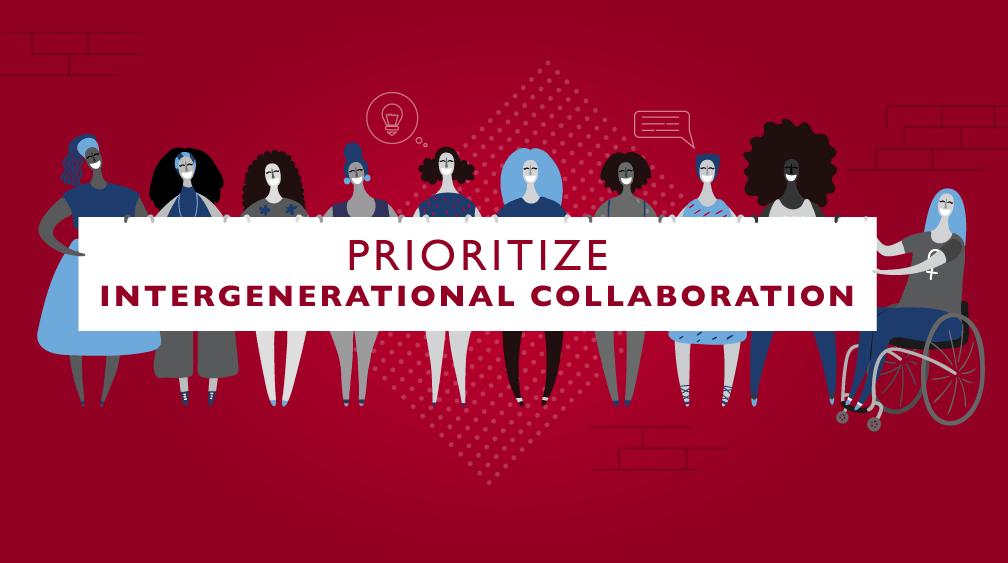In 2018, women held more than half of management roles in the workforce but remained grossly underrepresented in the top tiers of leadership.* Women earn advanced degrees at a higher rate* but still only earn 80% of what their male counterparts make.* Today, five generations of women coexist in the workplace. Each generation, shaped by their unique experiences, represents a powerful group of women who overcame adversity to pave the way for the next generation. Women have come so far, and yet there is still more work to be done.
Generations do not always share the same values and perspectives, which can make cross-collaboration difficult. By working together to create a shared dialogue on how to be authentic and operate as leaders, women can find more ways to better integrate across generations and empower each other. It is our collective responsibility to shape and groom the next generation of women leaders to be even stronger, better represented at the top tiers of leadership, and have more opportunities than those available to us today.
How can women work together to better foster intergenerational collaboration in the workplace?
Talk about it. Name the dynamics you see that cause riffs between the generations. Form a focus group or hold leadership office hours for your staff and fellow women to share their experiences. Create a CLEARING to talk about how women’s leadership is perceived in your organization. Understand the individual experiences across the generations and identify the obscurities which need attention. Create a shared language to form a bridge between the areas of miscommunication.
Make commitments to each other. Identify how you can make your organization more inclusive and cohesive, and make commitments from each generation on how to shift the status quo. That could look like developing a special women’s career advising program or a women-focused Diversity, Equity, and Inclusion role.
Make Connections Across Generations. According to Adaptive Space, 80% of personal influence is achieved through in-person interactions. Reach out to members of other generations for coffee or lunch, listen to their stories and be curious about their past experiences. Make the time to speak about collaboration across women and encourage new generations to join the conversation.
Empower Young Leaders. If you are a member of an older generation or even a younger member in a management role, take the time to recognize other women as leaders in your organization. Ask yourself: who am I recognizing as a leader at my organization right now? What story am I telling about leadership and women’s leadership? Challenge that conclusion. These assumptions might exclude certain types of women and limit recognition of their work. Acknowledge leadership occurs at every level, regardless of title.
Mentor. As a female leader, choose both an older and younger female mentor. This enables you to understand the different demands facing women in the workplace across different age ranges, to practice and model humility, and to create a broader network of supportive women.
By making space for an intergenerational dialogue, women leaders will create a cohesive organization that strengthens women’s ability to thrive and lead as a whole. This month, and every month, take a moment to recognize and thank those strong and powerful women who came before you.
“Please remember that young women are not the leaders of tomorrow. We are leaders of the women’s movement today. However, do not think that this means that we want to do it without earlier generations of women’s movement activists.” (Lewis, Women’s Movements: Flourishing or in Abeyance)
